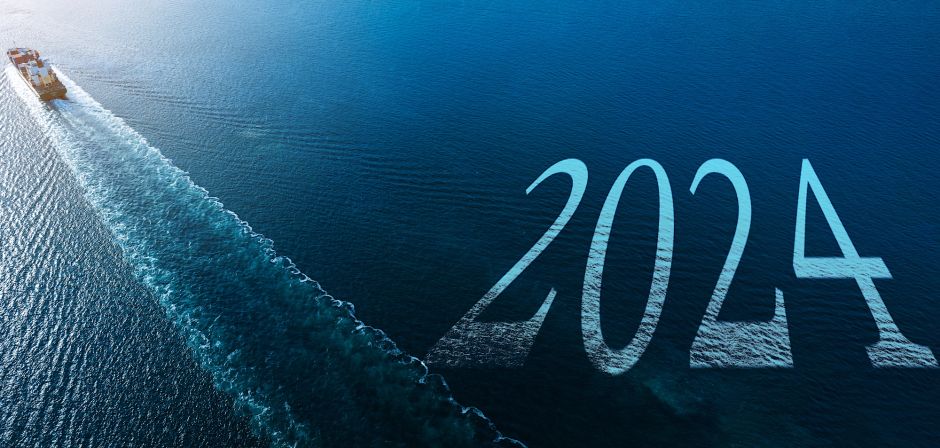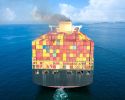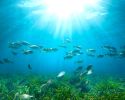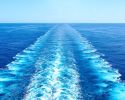Lighthouse external analysis 2024 – increased turmoil

Lighthouse’s previous external analysis of the shpping industry was published in September 2023. At that time, we noted that two major events had significantly impacted shipping over the past year – the war in Ukraine and the EU’s climate package, Fit for 55. A year later, the situation remains largely the same, but with the added factor that the global turmoil has taken on even greater importance.
The Gaza War’s Impact
On October 7, 2023, Hamas carried out a terrorist attack on Israel, and since then, the security situation in the Middle East has seriously deteriorated. Shipping has been directly affected as the Iran-backed Houthi movement in Yemen has been continuously attacking commercial vessels in the Red Sea since November 2023. This is in reaction to Israel’s offensive in Gaza. No one knows how this will evolve or whether the war will escalate or spread, but disruptions in container shipping are here to stay, according to researchers behind a report published in February 2024, funded by the Swedish Transport Administration and Lighthouse.
"There will be more significant disruptions in container traffic, that is something we’ve learned during the project. There are many bottlenecks in the system. During Covid, the virus was one bottleneck, but now the bottlenecks are primarily climate change and geopolitical crises. Global trade was shaped by peace for a long time, but just before the pandemic, we saw a trade war between the U.S. and China begin to escalate, and now we clearly see how drought and war are causing disruptions," said Ceren Altuntas Vural, a researcher at Chalmers, during the report’s release.
NATO Membership’s Impact
A few weeks later, on March 7, Sweden finally became a member of NATO. Since the application process began nearly two years earlier, issues concerning the country’s security and supply security have risen higher on the agenda. This, in turn, has brought shipping into the focus of Swedish politicians – something the maritime industry has long fought for. Lighthouse was early in conducting the study The Benefits of Swedish-flagged Ships and the Importance of Increased Flagging for Sweden, which in 2022 revealed that the country’s supply capacity in times of crisis is at risk, knowledge about shipping is declining, and billions of kronor are being lost. Swedish flagging must increase, a point emphasized by nearly every politician interested in shipping during the 2022 election campaign. The unrest also led to increased funding for maritime education at Chalmers and Linnaeus University to support the growth of the maritime sector.
NATO membership also implies changes for Sweden’s total defense and military capabilities. During the national defense conference Folk och Försvar in Sälen in January 2024, military and political leaders signaled that the Swedish public must prepare for the possibility of war. When Navy Chief Ewa Skoog Haslum was interviewed by Expressen at the conference, she emphasized the importance of protecting the strategically significant area in the southern Baltic Sea from Russia.
"For the Navy and the Armed Forces as a whole, it’s about being constantly present at sea to signal that we are safeguarding the freedom to navigate," she said.
Cyberattacks on the Rise
Regarding security, the issue of cybersecurity has remained relevant over the past two to three years, with numerous reported attacks. Unfortunately, there seems to be no end in sight. The maritime industry remains an easy target for cybercriminals. In November 2023, an international report revealed that the number of paid ransoms following cyberattacks increased by 357% over the past year. One in three shipowners, out of 150 surveyed, had been affected by cybercrime, while the cost for the industry to protect itself has increased by 200%.
No Reports Yet on EU ETS Effects
The integration of shipping into the EU Emissions Trading System (EU ETS) and the new FuelEU Maritime rules significantly influenced the maritime agenda last year. As the actual incorporation into EU ETS occurred on January 1, 2024, this year will see the major transition, with additional transport costs needing to be covered and fuel and emission data requiring continuous verification. However, we have yet to see any analysis or reports on how the implementation has affected shipping. It is expected that such analyses will emerge after the turn of the year.
Recruitment Problems Remain
Just before the release of last year’s world analysis, Transportföretagen warned that 2,200 people, ranging from deckhands to engineers and officers, need to be recruited into the maritime industry over the next three years. If this is not achieved, it will negatively impact Swedish exports and imports, leading to significant socioeconomic consequences. The news, which received considerable attention, followed a Lighthouse study showing that 200 students need to enroll in the maritime captain’s program annually to meet future demand for ship officers. Encouragingly, there has been an upward trend at Chalmers, where applications increased in the fall semester of 2024. Eighty-one percent more students have enrolled in the maritime programs compared to last year, with particular interest in becoming ship captains – 75 started the program compared to 41 the previous year. However, applications at Kalmar have remained at previous levels.
The issue of recruitment and retention in the maritime sector has not been resolved in just a year, and in August 2024, Lighthouse published the pilot study How Do We Retain Swedish Seafarers at Sea? The pilot study marks the beginning of a larger research project, in collaboration with the industry, to identify measures that can encourage seafarers to stay in the profession longer and explore ways to attract those who have left.
The Major Question: Access to Green Electricity
When it comes to alternative fuels, the trend is that discussions in both Swedish and international media are increasingly focused on how the maritime industry will secure sufficient green energy in the future. In the fall of 2023, DNV reported in its Maritime Forecast to 2050 that the shipping industry would need access to between 30 and 40% of all fossil-free fuels projected to be produced globally by 2030 to meet climate goals. This is, of course, unrealistic, and shipping must therefore reduce its energy consumption as much as possible: "Energy efficiency measures such as speed reduction, route optimization, and hull and propeller cleaning should be implemented wherever possible," DNV wrote in the report.
The IMO has also long focused on energy efficiency as a powerful tool for achieving set goals. Yet, research and development investments in this area have been limited. However, now that shipping is part of the EU ETS, there is increasing talk about the importance of energy efficiency in the maritime sector’s transition. There is significant potential for savings, and opportunities for Sweden, which is at the forefront in this area.
So what about fuels and propulsion?
In international maritime press, there is much discussion about ammonia and methanol as the fuels of the future, at least for ships that will cross the world's oceans. In January 2024, a study from the University of Oxford concluded that green ammonia could cover a large part of global shipping's fuel needs by 2050. By focusing on the 100 ports with the highest fuel demand in the world, over 60% of the need could be met.
However, DNV is not as optimistic about green ammonia and predicted in May 2024 that the majority of ammonia consumed by shipping will be blue, which is produced through carbon capture and bunkering.
"It’s pointing somewhat towards ammonia or methanol," said Chalmers researcher Selma Brynolf, when the report Hydrogen, ammonia, and battery-electric propulsion for future shipping was published in December. Unlike much other research, the fuels in the three-year research project were analyzed from a life-cycle perspective, which includes the entire production chain and infrastructure.
In Sweden, the much-publicized construction of the wind-powered car carrier Orcelle Wind is also making progress. The first 40-meter-high wing sail has been mounted on land at the Oresund Drydocks shipyard in Landskrona. This installation is aimed at testing the sail's functionality, training crew members, and further developing the automation of the wing sails. In Sweden, many also hope that biogas will become a significant part of the future fuel mix. It could be a good business opportunity for us, argue the researchers behind the report Renewable Liquid Biogas (LBF) for shipping in practice, published in February 2024. First, the technology is mature, and a large portion of all new ships can run on it. Secondly, the fuel can be produced locally in Sweden, and thirdly, the report shows that Swedish shipping wants biogas.
"Additionally, and I don't think this has really been highlighted in the debate, very little electricity is needed to produce biogas. This means that if we produce biogas equivalent to 10 or 20 terawatt hours instead of electrofuels, which require significantly more electricity to produce, the expansion of electricity production capacity won’t need to be as stressed," said Karl Jivén of IVL in connection with the report's release.
Creating a demand for green fuels
The market for green fuels in Europe has developed slowly, and unfortunately, several production initiatives have collapsed before even being realized. The latest example is FlagshipONE in Örnsköldsvik, which was supposed to be Europe’s largest facility for e-methanol for shipping but was shut down immediately in August 2024. According to the owners, Ørsted, the shutdown was due to a combination of economic and strategic reasons. This reflects, of course, a broader challenge in the rapidly changing renewable energy market: As it stands today, the market alone cannot create the demand for the use of alternative fuels. Politics must assist more. Clear regulations, guidelines, support, and subsidies are needed.
The situation, however, is not hopeless. Every initiative that Ørsted and others undertake, even if they don’t reach their goal, contributes to the collective knowledge in the field. And Liquid Wind, which developed the FlagshipONE concept, is moving forward with its knowledge. Just a few days after the announcement of the closure in Örnsköldsvik, the international energy company Uniper announced that it had chosen Liquid Wind to develop NorthStarH2 – a facility that will produce 100,000 tons of e-methanol per year in Östersund. We can only hope it succeeds.
Maritime law and ocean planning on the agenda
Clearer regulations and guidelines are also needed regarding maritime law and ocean planning. For instance, what legal conditions apply when building wind farms? These take up large areas and are often located in regions with heavy ship traffic – something that naturally puts them in conflict with shipping interests.
“It is urgent to conduct a comparative research study on how other countries have regulated shipping interests in relation to other uses of maritime areas. Further research is also needed to make the permitting process more predictable,” said Jeanette Andersson from VTI at the webinar Maritime Law and Ocean Planning from a Shipping Perspective, which Lighthouse organized in May, presenting the results of two preliminary studies in the area.
Scrubbers to be banned
Sustainability and the environment are not just about the climate. In a comprehensive analysis that Lighthouse conducted for the Swedish Transport Administration in 2022, many, including researchers and industry professionals, believed that the sea would become the next major priority for research. Much points in that direction. Several reports since fall 2022 have warned about the harmful effects of scrubber water on marine organisms, which are far greater than previously thought. This prompted the government to act. In June 2024, a proposal was made to ban all open scrubbers discharging into water within Swedish territorial waters from July 1, 2025, and to ban all scrubber discharges into water from January 1, 2029.
"Reducing air emissions by shifting pollution to the sea is not a sustainable solution. That’s why we are now submitting a proposal to ban scrubber discharges into the water. Most Swedish shipowners have already chosen to run on fuel with such low sulfur content that they comply with the emission requirements without scrubbers. Now, we want this to apply to all ships in Swedish territorial waters," commented Minister of Infrastructure and Housing Andreas Carlson.
Electric propulsion creates as much noise as diesel engines
Another emission from shipping that has started to receive attention in recent years is underwater noise. This growing environmental problem is now regarded as pollution by the UN and the EU. Despite numerous reports showing how fish and whales can no longer communicate, locate partners, or in the worst cases, die on the spot, regulations and effective measures to reduce the noise are still lacking. The latest research came in January 2024 when the report Noise from ships powered by LNG or electricity and its effects: a cross-domain investigation showed that traditional diesel engines and new electric propulsion systems create roughly the same noise levels in the ocean.
“This is because most of the noise is generated by the propeller. So, if we want to address the issue of underwater noise, it’s better to look at how the propeller and the hull are designed rather than the electrification itself,” said Torbjörn Johansson, a researcher at IVL, who led the project.
Nowegians also dislike autonomous ships
Regarding digitalization, AI, and Big Data, there is, of course, a lot happening in shipping – from route optimization, digital port calls, just-in-time arrivals, and eco-driving to decision support, sea rescue, and fire safety. Just like in the rest of society, there is much talk about what AI can do for shipping – the development of AI is progressing at a breakneck pace. Today, AI can answer complex questions in real-time, recognize images, make financial forecasts and health predictions – and even create music reminiscent of any artist. However, there are things that AI finds difficult to learn. For example, AI has been in driving school for at least 25 years, yet still hasn’t learned how to drive a car properly. AI struggles with complex traffic situations and communicating with other road users – in short, AI lacks the dynamism of human senses.
This also means that artificial intelligence is quite useless at steering ships, at least in dense archipelago traffic, as shown by new research in the COLREG3 project this past spring. In Sweden, we therefore prefer to talk about smart ships rather than autonomous ones. Norwegian officers and captains also prefer this. According to a recent study, they are skeptical of autonomous ships.
Stamp duty abolished
At the beginning of September, the government made a long-awaited announcement. In the upcoming budget proposal, it is suggested that the so-called stamp duty be abolished. Due to stamp duty, many Swedish shipping companies have chosen to register their ships in other countries, including several of our neighboring countries where there is no such tax. In January, the government's investigator, Rikard Engström, submitted his investigation, proposing several measures to strengthen the competitiveness and preparedness of Swedish shipping. The most important measure would be to remove the stamp duty on mortgage applications for ships. The tax amounts to 0.4% of the mortgaged amount. Engström also proposed changes to the so-called tonnage tax.
"The government is working to increase the competitiveness of Swedish shipping and make things easier for shipping companies. Abolishing the stamp duty and changing the rules for leasing can contribute to more Swedish-registered ships. This, in turn, can also facilitate planning to meet the state's need for ships in the event of war or the threat of war and is also positive for employment of Swedish seamen," said Minister of Infrastructure and Housing Andreas Carlson in a government press release on September 9.
Europe is falling behind
On the same day, a press conference was held in Brussels where the former head of the European Central Bank, Mario Draghi, presented his major report on how the EU should strengthen its global competitiveness. The message was grim.
"For the first time since the Cold War, we need to worry about our survival," he said, noting that the EU needs a Marshall Plan.
€9 billion a year. That’s how much the EU needs to invest to meet the competition from the US and China, Draghi explained in his report, which identifies three key areas to drive growth: the EU must catch up on innovation, climate goals and competitiveness must work together, and security and independence need to be strengthened. To achieve this, Draghi proposes significantly larger investments in funding researchers and entrepreneurs, faster decision-making, simplified regulations, and deeper cooperation between EU countries, particularly regarding strategic plans and initiatives.
When it comes to maritime transport, the report emphasizes that the sector is critical to Europe's energy, food, and supply chain security, especially in times of geopolitical uncertainty. This aligns closely with arguments previously raised by Sweden's maritime sector, advocating for greater investment by the Swedish government in maritime research and innovation. The report also notes, similar to Sweden's national perspective, that while Europe's maritime sector remains strong, it is losing competitiveness and risks further decline.
According to the report, maritime transport, alongside aviation, is one of the hardest sectors to transition to fossil-free operations. Significant investments in green fuels and new technologies are necessary, with costs for the maritime sector estimated to reach around 40 billion euros per year from 2031 to 2050. The report stresses the need for adequate funding, including specific calls for maritime projects from the EU Innovation Fund, linked to the EU ETS (Emissions Trading System).
-
 Ny studie: Eldrivna pendelbåtar kan effektivisera Stockholms kollektivtrafik
Ny studie: Eldrivna pendelbåtar kan effektivisera Stockholms kollektivtrafik -
 Sjöfartens utsläpp ökar
Sjöfartens utsläpp ökar -
 Sociala relationer påverkar val av bränsle
Sociala relationer påverkar val av bränsle -
 Sjöfartens omställning kräver ”mjukare” påtryckningar
Sjöfartens omställning kräver ”mjukare” påtryckningar -
 Hon hade avtalad tid med Kapten ynkrygg
Hon hade avtalad tid med Kapten ynkrygg -
 Lighthouse omvärldsanalys 2025 – osäkerhet och tullar präglar sjöfarten
Lighthouse omvärldsanalys 2025 – osäkerhet och tullar präglar sjöfarten -
 Se seminariet Shipping in the Marine Environment
Se seminariet Shipping in the Marine Environment -
 Vad betyder egentligen de 90 procenten?
Vad betyder egentligen de 90 procenten? -
 Hålla där...
Hålla där... -
 Ny rapport: Klimatförändringarna ett hot mot de flesta större hamnar i världen
Ny rapport: Klimatförändringarna ett hot mot de flesta större hamnar i världen

